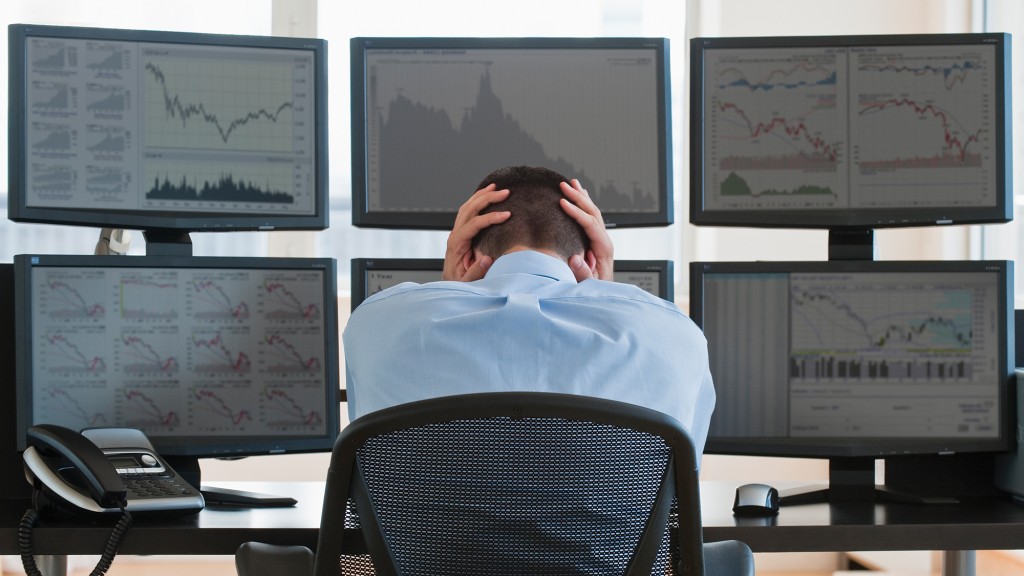Can better trading floor environments mitigate stress?
Trading on Stress
What We Did
We conducted secondary research to identify opportunities for design to improve the health and well-being of traders, addressing issues of stress and poor decision-making often associated with today’s trading environments. Our goal was to explore the neurological and biological considerations relevant to the financial workplace, alongside progressive ergonomic, technological, and design strategies relevant to creating healthier and more effective trading environments.
The Context
Financial trading ranks among the most high-pressure and stressful knowledge worker occupations. With success or failure hinging on the traders’ ability to instantaneously process, analyze, and react to multiple and increasingly fast-paced streams of information, debilitating stress and high burnout rates have become all but endemic for traders, a startling state for a profession where most workers are only in their 20s or 30s.
A typical trader’s workday begins long before market opening with research and preparation, and extends long after closing, recapping the day’s efforts and planning for the next. While the market is open, turnaround times for trades are often measured in seconds or even milliseconds, with traders performing a delicate balancing act between risk taking and risk avoidance. One wrong decision or even an incorrect keystroke can spell disaster.
But change is on the horizon. The financial crisis still looms large over Wall Street, causing firms to question industry and company norms. With clients seeking change, this research project is a critical step in helping our trading firm clients redefine both their workplace and, in turn, their work culture.
By understanding the current physical characteristics of trading floors and the potential to map behavior and space, financial firms can redesign these environments to mitigate stress, shape positive behavior, and break the risk cycle. The potential rewards are profound. It is not just the health and well-being of traders at stake, but in many ways the health of financial markets themselves.
The Results
While the technology and increasingly high-pressure processes of trading have changed drastically in the digital age, the trading floor itself has seen little workplace design innovation. In contrast to the dramatic changes in other corporate workplaces, trading floors remain defined by dense, unvarying linear layouts more akin to a factory or production floor. These layouts ignore the potential benefits of more progressive workplace strategies characterized by openness and collaborative spaces, support of focus, and variety of work settings.
To begin the research, we identified broad areas in which the physical trading floor environment might help improve the employee experience. From that initial list, three topics revealed themselves as having the strongest potential for positive impact: control, sensory stimuli, and behavioral ergonomics. Additional factors to consider include acoustics, amenities, density, indoor air quality, lighting, lines of sight, mobility, and temperature/humidity.
What This Means
Control of the physical environment may mitigate risk-seeking behavior. Traders are prime candidates for “control illusions” in their daily practices. They are prone to seek and over-estimate their control of the market—the greater this feeling of control, the worse their performance. We are exploring the possibility that familiarity and certainty within the immediate work environment may reduce the need to control the uncontrollable.
Curate sensory stimuli to minimize stress, rather than amplify it. The quality of light and sound cause physical reactions that affect performance and cognitive state. Prolonged exposure to fluorescent lighting in the absence of natural light is associated with dampened moods, a particular problem for traders working long hours. Views and sight-lines also impact experience, especially when providing connections to nature.
Consider posture carefully. Proper posture has been shown to improve cognitive function, emotional disposition, and decision-making. Open or expansive postures may even improve confidence and minimize errors. This improved confidence does come with a caveat—open postures are also associated with increased levels of risk and dishonesty.
What’s Next?
Our next step is to conduct fieldwork examining the daily activity of the trader to better understand the presence of stress-inducing factors on a typical trading floor. As a part of this phase, we will be creating an infield tool kit to analyze both cultural and physical characteristics of the work environment—from employee posture and routines to light and sound qualities. It is our expectation that these innovations will yield qualitative data that can be evaluated to develop a new standard of best practices for the design of future trading floor environments.
Learn More
Team
Sonya Dufner, Heera Gangaramani, Rocco Giannetti, Kimberly Kelly, Christine Kenline, Katherine Plunkett, Braxton Satterfield
Year Completed
2015
Comments or ideas for further questions we should investigate?
